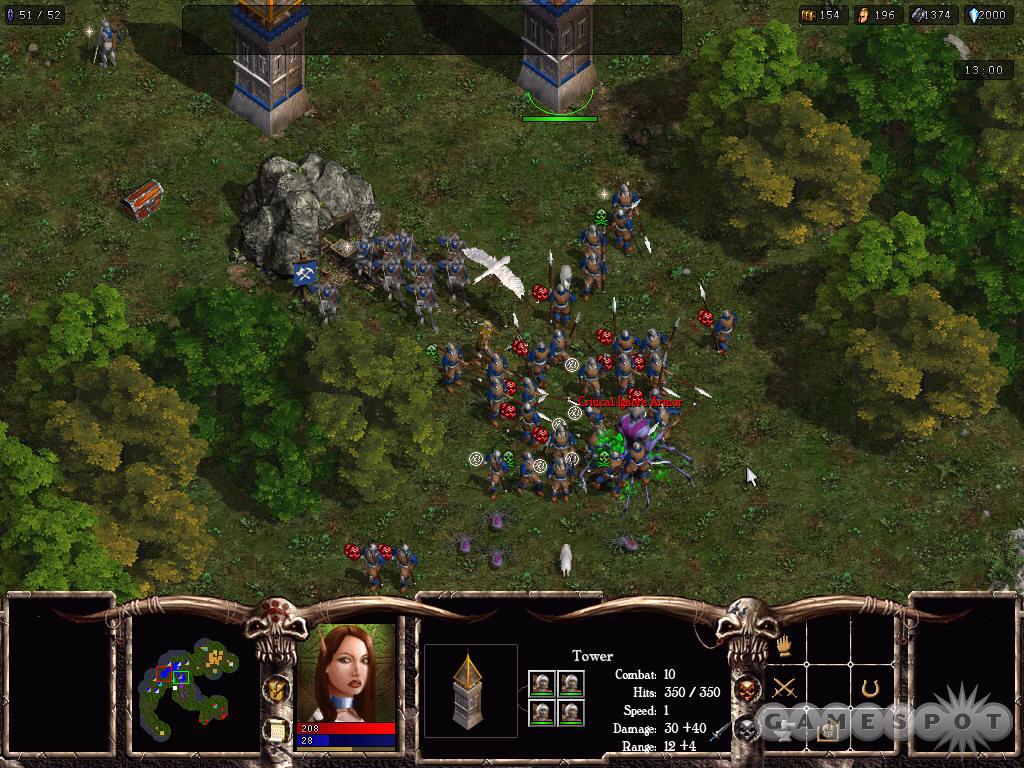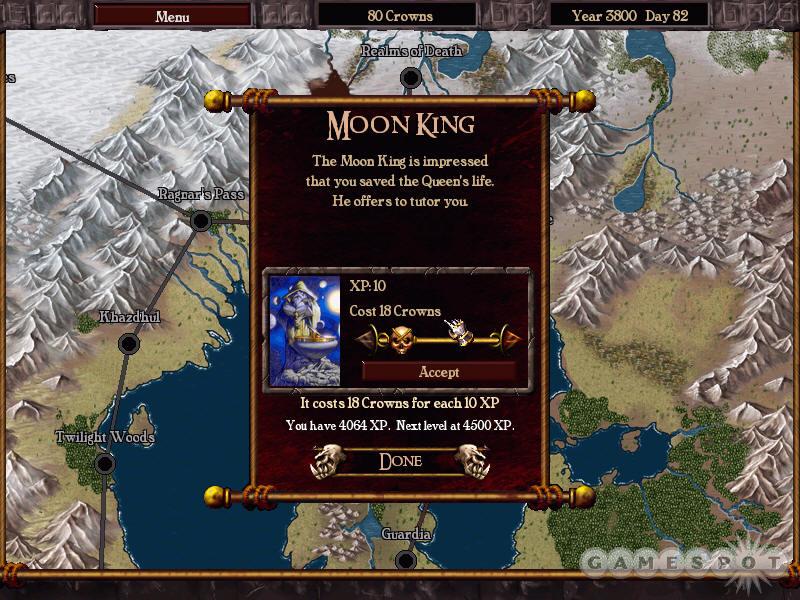The Warlords Battlecry series has always felt like the perennial underdog of the real-time strategy genre. In a field dominated by the likes of Blizzard's Starcraft and Warcraft games and Ensemble's Age of Empires, the first two Warlords Battlecry games managed to carve a niche following with strategy fans. Warlords Battlecry II, in particular, has become something of a cult favorite thanks to its superb gameplay, innovative dynamic campaign, persistent heroes, and plethora of playable races. So, with Warlords Battlecry III, the developers at Infinite Interactive have played it relatively safe. Aside from some sprucing up of the graphics and some admittedly daring changes with the campaign, this new sequel doesn't fall far from the tree. As a result, it plays very much like its predecessors. While this should definitely please fans of the series, it also lends the game a sort of timelessness, because it looks and feels very old-fashioned in a genre racing ahead to embrace 3D graphics and streamlined gameplay.

As in the previous two games, your first job in Warlords Battlecry III is to create a hero with whom to lead your armies during the campaign. The hero plays a critical role during battles by not only leading your armies but also by seizing critical resources scattered over the map. More importantly, the hero unit imparts a very strong role-playing element to the game because he or she can gain experience, level up, and learn powerful new skills and abilities. Since there are 15 races and more than a dozen character classes to choose from, you can create virtually any kind of hero-type imaginable, from a sword-wielding barbarian to a powerful spellcaster. And, once again, your hero remains persistent over the course of the campaign, which means that you can develop quite a powerful hero by the time the story finally unfolds.
The new campaign structure is quite a departure from Warlords Battlecry II, which took the form of a Risk-style board game where you conquered the world province by province. In its place is a new RPG-style adventure in which you must travel across the world--army in tow--to attempt to stop a powerful demon on the loose. As you travel from location to location, you must undertake a number of quests and missions, some random and some plot-critical. For instance, you can take a detour in a mountain pass to meet a powerful dragon who will aid you later in your quest if do him a favor by clearing the pass of some pesky barbarians and undead. In other missions, you'll have to undertake quests to get the local inhabitants to give you vital clues as to where the demon went. As a result, you may escort an elf queen on a dangerous journey, or you may be enlisted to stop a horde of monsters from invading the kingdom. As you enlist allies and conquer enemies, you can then choose which race you control for each mission. This can make quite a difference in the game, because one race may be better suited for a certain mission than another race. Furthermore, sometimes your hero may receive certain bonuses when leading his or her native race.
There are 15 playable races in the game--three of them new from Warlords Battlecry II--that feature a wide variety of fantasy-themed good and evil proponents. This is where the game's (and the series') impressive amount of depth comes into play. Each race has its own units, technology tree, and build tree, which means that each race plays differently from the others. The powerful Empire race, for example, uses a lot of iron ore in its conventional army, while the Elves and more-mystical races consume more magical crystal. In general, all the races balance fairly well against one another, and while you may find some players advocating X race over Y, you can easily find others touting the reverse.
The real-time battles deviate very little from those in Warlords Battlecry II, so they definitely feel like more of the same thing. Once again, your goal early on in most battles is to establish a base. It's a fairly long and drawn-out process to build up a base and then research the technologies required to churn out better and more-powerful units, along with various unit upgrades. While other real-time strategy games (most notably Rise of Nations) have sought to streamline this building phase, Warlords Battlecry III almost revels in it. It takes a long time to reach critical mass with a base, and while it's not a bad thing per se, it does get repetitive quickly, especially considering the number of battles there are in a campaign. Since your units gain experience points and can level up, they're more valuable to you if they survive contact with the enemy, and the best way to ensure this is to make certain that you've got all the unit upgrades researched.
To its credit, though, the game does force you to venture out to secure vital resources that, in traditional Warlords fashion, are scattered all over the map. This will generally force you to create a powerful mobile group around your hero so that you can respond to both enemy attempts to convert your resources and enemy incursions into your territory. And while you can occasionally land a crippling blow early on by killing an enemy hero, most battles will rely on economic overproduction to crush your enemy with overwhelming numbers.

Warlords Battlecry III is a better-looking game than its predecessors, but that's not saying a lot. It appears that the developers have recycled the aging, 2D graphics engine from the previous game and have gussied it up a bit with a better color palette and textures. Otherwise, it still looks like a game that's a few years behind the rest of the genre. It doesn't help that the unit animations are somewhat clunky, and it's hard to comprehend what's going on in battle because all the units meld together in a confusing clash of pixels. Worse, there is no zoom option, so you can't pull up close to the action, nor can you pull back for a wider view. Simply put, this is a series that desperately needs new technology and a new look, because the competition passed it long ago.
Finally, the game's multiplayer component still has some teething issues, because we had numerous problems connecting to Enlight's matchmaking service. We did get the game running in a network session, but the huge number of factions in the game is sure to offer lots of logistical challenges--aside from the fact that players will learn to strategically adapt to different foes in a short amount of time. The end result is that this otherwise solid real-time strategy game comes off feeling a bit dated. And though we admire the new adventure-style campaign, we wish the rest of the game had been given an equally innovative overhaul.